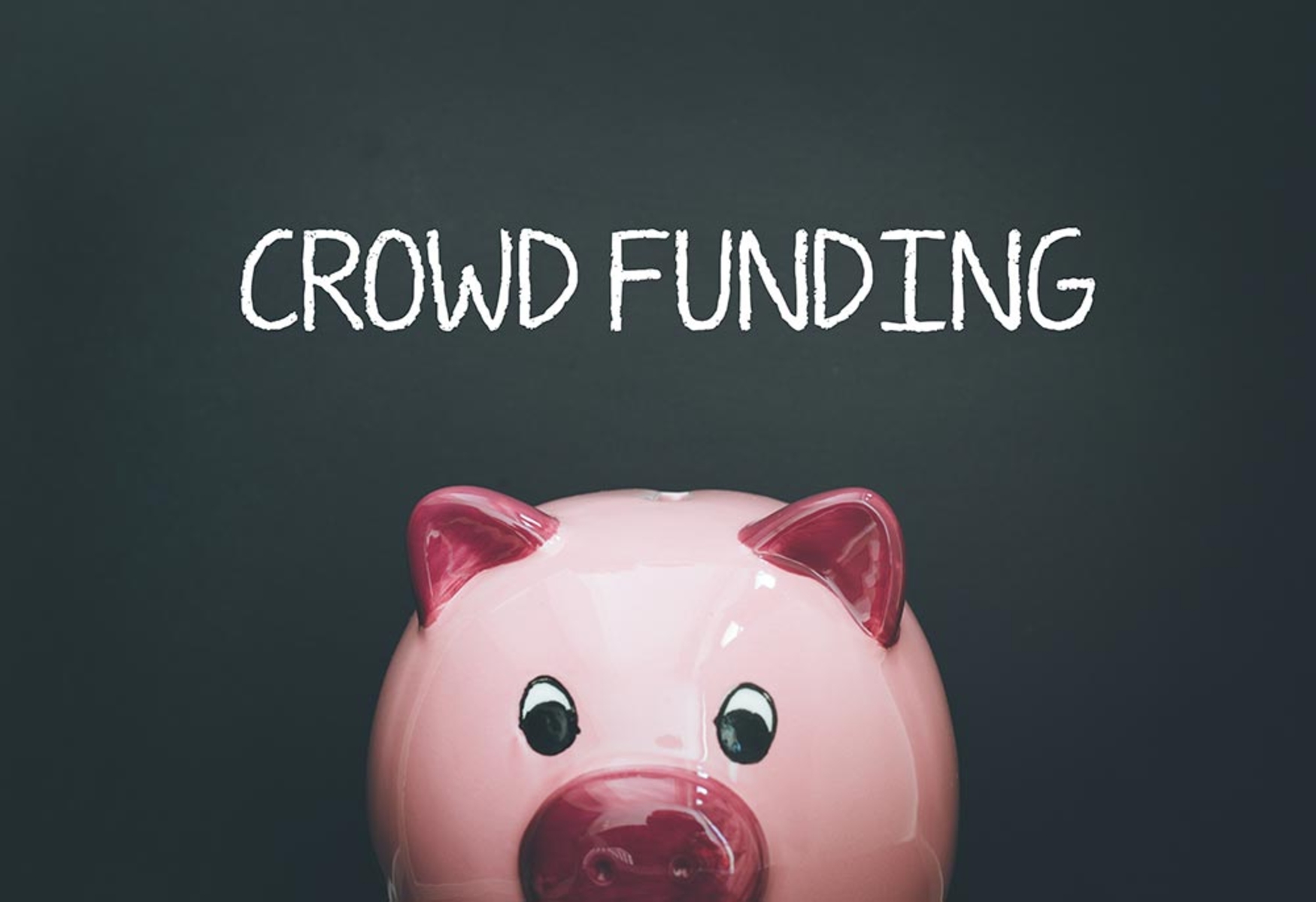Introduction
Welcome to our comprehensive guide on how to run a successful Testing The Waters Regulation A+ crowdfunding campaign. If you’re looking to raise funds for your business or project, Regulation A+ crowdfunding can be an excellent option to consider. This innovative approach allows companies to solicit investments from the general public while adhering to the regulations set forth by the U.S. Securities and Exchange Commission (SEC).
Regulation A+, which was introduced as part of the JOBS Act in 2015, has opened doors for startups, small businesses, and entrepreneurs who may not have access to more traditional methods of fundraising. It offers the opportunity to attract a broad base of investors, including both accredited and non-accredited individuals.
However, launching a successful Regulation A+ crowdfunding campaign requires careful planning, strategic execution, and adherence to the regulatory guidelines. In this guide, we will walk you through the key steps and considerations to take in order to maximize the success of your campaign.
Understanding Regulation A+ Crowdfunding
Before delving into the specifics of running a successful Regulation A+ crowdfunding campaign, it’s important to understand the basics of this fundraising method. Regulation A+ crowdfunding allows companies to raise capital through the sale of securities to the general public, including both accredited and non-accredited investors.
There are two tiers within Regulation A+. Tier 1 allows companies to raise up to $20 million in a 12-month period, with less extensive reporting requirements. Tier 2 allows companies to raise up to $75 million and comes with more comprehensive reporting obligations, including annual and semi-annual reports. The chosen tier will depend on the amount of capital you aim to raise and your willingness to comply with the associated regulations.
One of the key advantages of Regulation A+ crowdfunding is its inclusivity. Unlike other fundraising methods, such as Regulation D offerings, which typically restrict participation to accredited investors, Regulation A+ allows companies to solicit investments from individuals at all income levels. This opens up a much larger pool of potential investors and increases the chances of meeting your fundraising goals.
It’s worth noting that Regulation A+ crowdfunding still comes with certain limitations. While it offers a streamlined process compared to traditional initial public offerings (IPOs), it still requires companies to go through an extensive SEC review process. This process involves filing and receiving qualification from the SEC for an offering statement, which includes financial statements, business plans, and other relevant information about the company seeking funding.
Additionally, Regulation A+ crowdfunding places some restrictions on the resale of securities purchased through the campaign. Investors may not be able to resell their shares immediately after the campaign concludes, potentially limiting liquidity for early-stage investors.
Despite these limitations, Regulation A+ crowdfunding has emerged as a popular and effective way for companies to raise capital. By understanding the intricacies of this fundraising method, you can make informed decisions and maximize the benefits it offers for your campaign.
Setting Your Goals and Objectives
Setting clear goals and objectives is a crucial first step in running a successful Regulation A+ crowdfunding campaign. Before launching your campaign, take the time to define what you hope to achieve and how much capital you need to raise. This will guide your entire strategy and help you stay focused throughout the campaign.
Start by determining your funding goal. Consider both the minimum amount you need to achieve your business objectives and an ideal target that would allow for additional growth and development. Be realistic yet ambitious in setting your goals, ensuring they align with your business plans and financial needs.
Alongside your funding goal, establish specific objectives that you want to accomplish through your crowdfunding campaign. These objectives could include expanding your customer base, increasing brand awareness, generating media exposure, or securing strategic partnerships. By defining these objectives, you can tailor your campaign and messaging to achieve them effectively.
Furthermore, it’s important to identify your target audience. Consider who your ideal investors are and what characteristics they possess. This could include factors such as age, location, income level, and industry expertise. Understanding your target audience will enable you to tailor your marketing efforts and maximize the chances of attracting the right investors to your campaign.
When setting your goals and objectives, be sure to define measurable metrics to track your progress and success. These metrics could include the number of investors attracted, the amount of funds raised, the level of engagement on your campaign page, or the media coverage generated. Regularly monitor these metrics throughout your campaign to assess the effectiveness of your strategies and make any necessary adjustments.
Lastly, consider the timeframe for your campaign. Decide how long you will run the campaign, taking into account factors such as investor interest and market conditions. While some campaigns may run for a few weeks, others might extend for several months. Choose a timeframe that allows for sufficient investor engagement while maintaining momentum throughout the campaign.
By setting clear goals, defining your objectives, identifying your target audience, and establishing measurable metrics and a timeline, you lay a strong foundation for your Regulation A+ crowdfunding campaign. This strategic approach will keep you focused, increase your chances of success, and provide a framework to evaluate and optimize your efforts along the way.
Building a Strong Team
Building a strong team is vital to the success of your Regulation A+ crowdfunding campaign. Surrounding yourself with the right individuals who possess the necessary skills and expertise will help you navigate the complexities of the campaign and execute it effectively. Here are some key roles to consider when assembling your team:
- Project Manager: An experienced project manager will oversee the entire campaign, ensuring that all tasks are executed smoothly and on schedule. They will coordinate team members, track progress, and keep the campaign on track.
- Marketing Specialist: A marketing specialist will be responsible for developing and implementing a comprehensive marketing strategy to promote your crowdfunding campaign. They will have expertise in digital marketing, social media, content creation, and campaign branding.
- Financial Analyst: A financial analyst will play a crucial role in preparing financial projections, analyzing the feasibility of your funding goals, and ensuring that your financial statements are in order for regulatory compliance.
- Legal Advisor: A legal advisor with knowledge of securities law and crowdfunding regulations will help ensure that your campaign complies with all the necessary legal requirements. They will review your offering documents, contracts, and disclosures to avoid any potential legal pitfalls.
- Design and Content Creators: Graphic designers and content creators will be responsible for creating visually appealing and compelling marketing materials. This includes designing a professional campaign page, crafting persuasive copy, and creating engaging multimedia content.
- Public Relations Specialist: A PR specialist will assist in generating media coverage and managing relationships with journalists and influencers. They will help create press releases, pitch stories to media outlets, and secure interviews or features related to your campaign.
When assembling your team, look for individuals who have experience or a proven track record in crowdfunding campaigns or related fields. Seek out professionals who are passionate about your project and understand the unique challenges and opportunities presented by Regulation A+ crowdfunding.
Collaboration and effective communication are essential for a strong team, so choose individuals who can work well together and complement each other’s skills. Regular meetings and progress updates will help ensure everyone is aligned and on track to achieve the campaign’s goals.
Remember, your team is an extension of your brand and campaign. Each member should be dedicated, motivated, and committed to the success of the project. By building a strong team, you increase your chances of executing a successful Regulation A+ crowdfunding campaign and reaching your funding goals.
Preparing Your Offering Circular
Preparing a comprehensive and informative offering circular is a crucial step in running a successful Regulation A+ crowdfunding campaign. The offering circular serves as a document that provides potential investors with important details about your company, its financials, risks, and the terms of the investment opportunity.
When creating your offering circular, consider the following key elements:
- Business Overview: Provide a clear and concise overview of your company, its mission, and its products or services. Highlight what sets your business apart from competitors and the potential for growth.
- Management Team: Introduce the members of your management team and their relevant experience. This will instill confidence in potential investors, as they will want to know that your team has the necessary skills and expertise to execute your business plan successfully.
- Financial Statements: Include audited financial statements for the past two or three years. This will provide transparency and give investors insight into your company’s financial performance.
- Risk Factors: Identify and disclose any potential risks associated with your business, industry, or investment opportunity. This will help investors make informed decisions and demonstrate your commitment to transparency.
- Terms of the Offering: Clearly outline the terms of the investment opportunity, including the number of shares offered, the offering price, and any potential dilution or changes to shareholder rights.
- Use of Proceeds: Explain how the funds raised through the crowdfunding campaign will be used. Provide a breakdown of the planned allocations and how they align with your business objectives.
- Legal and Regulatory Disclosures: Ensure that your offering circular includes all necessary legal and regulatory disclosures as required by the SEC. This may include information about potential conflicts of interest, pending litigation, or any relevant regulatory compliance matters.
When preparing your offering circular, it is advisable to work closely with legal and financial professionals who are experienced in Regulation A+ crowdfunding. They can provide guidance on regulatory requirements, help ensure compliance, and assist in crafting a document that effectively communicates your investment opportunity.
Remember to review and update your offering circular regularly to reflect any material changes in your business or market conditions. By providing a clear, accurate, and transparent offering circular, you will build investor confidence and increase the likelihood of a successful Regulation A+ crowdfunding campaign.
Choosing the Right Crowdfunding Platform
Choosing the right crowdfunding platform is a critical decision that will significantly impact the success of your Regulation A+ crowdfunding campaign. With numerous platforms available, each offering unique features and advantages, it’s important to consider several factors before making your selection.
Here are key factors to consider when choosing a crowdfunding platform:
- Reputation and Track Record: Research the platform’s reputation and track record. Look for platforms that have successfully facilitated Regulation A+ crowdfunding campaigns in the past and have positive reviews from users. This indicates their credibility and ability to attract investors.
- Target Audience and Investor Base: Evaluate the platform’s user base and determine if it aligns with your target audience and investment goals. Some platforms may cater to specific industries or have a user base more inclined towards certain types of investments. Ensure that the platform has a large and active investor community that matches your campaign’s needs.
- Platform Features and Technology: Assess the platform’s features, functionality, and user interface. Look for intuitive and user-friendly platforms that offer robust tools for campaign management, investor engagement, and post-campaign communication. Consider whether the platform provides analytics and reporting capabilities to help you track the performance of your campaign.
- Compliance and Legal Support: Determine if the crowdfunding platform has expertise in Regulation A+ compliance and provides adequate legal support. This includes guidance on regulatory filings, proper documentation, and maintaining compliance with SEC rules and regulations.
- Cost and Fees: Evaluate the platform’s fee structure and costs associated with hosting your campaign. Consider any platform fees, transaction fees, or commissions that may be charged. Compare different platforms to ensure you choose one that offers value for money and aligns with your budget.
- Additional Services and Support: Consider whether the crowdfunding platform offers additional services and support beyond just hosting your campaign. This could include marketing assistance, PR support, or access to a network of industry experts and advisors. Such services can enhance your campaign’s visibility and increase investor engagement.
To make an informed decision, research and compare multiple crowdfunding platforms. Take the time to understand their unique strengths and weaknesses, and how they align with your campaign goals. Reach out to the platforms directly to ask specific questions and gather additional information.
Keep in mind that choosing the right crowdfunding platform is not a one-size-fits-all decision. Consider your business’s unique requirements, investment goals, and target audience when making your choice. By selecting the right platform, you will increase your campaign’s visibility, attract the right investors, and ultimately maximize your chances of running a successful Regulation A+ crowdfunding campaign.
Creating Compelling Marketing Materials
Creating compelling marketing materials is essential for capturing the attention and interest of potential investors in your Regulation A+ crowdfunding campaign. The right messaging and visuals will help you effectively communicate your business’s value proposition, generate excitement, and compel individuals to invest. Here are key steps to consider when creating your marketing materials:
- Craft a Powerful Message: Develop a clear and concise message that highlights the unique aspects of your business, its potential, and the benefits of investing. Focus on what sets you apart from competitors and why investors should be excited about your opportunity.
- Define Your Brand Identity: Take the time to define your brand identity, including your logo, color scheme, and overall visual aesthetic. Consistency in branding across all marketing materials will help establish and reinforce your brand presence.
- Create Engaging Content: Develop engaging content that effectively conveys your business story and value proposition. This could include a pitch video, written content, infographics, or case studies, depending on the preferences of your target audience.
- Use High-Quality Visuals: Invest in high-quality visuals, including professional photographs and graphics, to enhance the visual appeal of your marketing materials. Visuals can captivate and resonate with potential investors, making your campaign more memorable.
- Include Testimonials and Social Proof: Incorporate testimonials from satisfied customers or industry experts to build trust and credibility. Positive endorsements and social proof can significantly influence potential investors’ decision-making process.
- Provide Clear Calls to Action: Clearly state the desired actions you want potential investors to take, such as signing up for updates, sharing on social media, or making an investment. Use persuasive language to encourage individuals to take immediate action.
- Optimize for Mobile Devices: Ensure that your marketing materials are mobile-responsive, as a significant portion of potential investors will be accessing your campaign information on smartphones or tablets. User-friendly mobile experiences are crucial for encouraging engagement and conversions.
- Test and Iterate: Continuously test and iterate your marketing materials to optimize their effectiveness. Conduct A/B testing on different messaging, visuals, and calls to action to identify what resonates best with your target audience.
Remember to align your marketing materials with your campaign’s overall messaging, branding, and goals. Consistency in messaging and visuals will help build a cohesive and memorable campaign experience for potential investors.
Finally, leverage the power of storytelling in your marketing materials. Connect with potential investors on an emotional level by sharing compelling stories that demonstrate the impact and potential of your business. This human touch will help foster a connection and make your campaign more relatable.
By investing time and effort into creating compelling marketing materials, you will significantly enhance the visibility and appeal of your Regulation A+ crowdfunding campaign, ultimately attracting more investors and increasing your chances of success.
Leveraging Social Media and Online Advertising
In today’s digital age, leveraging social media and online advertising is crucial for maximizing the reach and impact of your Regulation A+ crowdfunding campaign. These platforms provide powerful tools to connect with your target audience, build brand awareness, and drive engagement. Here are key strategies to effectively leverage social media and online advertising:
- Identify Your Target Platforms: Determine the social media platforms that align with your target audience and campaign objectives. Facebook, Twitter, LinkedIn, and Instagram are popular choices, but select the ones where your potential investors are most active.
- Create Engaging Content: Develop compelling and shareable content that resonates with your audience. This can include informative blog posts, captivating images, videos, infographics, and interactive content. Focus on providing value and building a community around your campaign.
- Engage with Your Audience: Regularly monitor and respond to comments, questions, and messages on your social media platforms. Engage in conversations, address concerns, and demonstrate your commitment to excellent customer service. Encourage user-generated content, such as reviews, testimonials, and user stories, to increase engagement and credibility.
- Run Targeted Online Ad Campaigns: Utilize the targeting capabilities of platforms like Facebook Ads, Google Ads, and LinkedIn Ads to reach your specific audience. Define your ad targeting criteria, such as demographics, interests, and behavior, to ensure your ads are seen by individuals who are likely to have an interest in your investment opportunity.
- Test Different Ad Formats: Experiment with various ad formats, such as video ads, carousel ads, and sponsored content. Test different ad copies, visuals, and calls to action to identify what resonates best with your audience. Monitor campaign performance and make data-driven optimizations to improve results.
- Create a Hashtag: Develop a unique campaign hashtag to encourage user-generated content and facilitate social media conversations around your campaign. Include the hashtag in your social media posts, encourage users to use it when sharing their support, and monitor the hashtag to engage with users and track campaign reach.
- Collaborate with Influencers: Identify influencers in your industry or niche who can endorse or share your campaign with their followers. Influencer partnerships can significantly amplify your campaign reach and credibility. Ensure that the influencers align with your brand and target audience.
- Track and Analyze Performance: Use analytics tools provided by social media platforms and online advertising platforms to track the performance of your campaigns. Monitor metrics such as reach, engagement, click-through rates, and conversions. This data will help you measure the effectiveness of your efforts and make data-driven decisions for optimization.
Remember to remain consistent with your messaging and branding across all social media channels and online advertising campaigns to maintain a cohesive campaign experience for potential investors.
By strategically leveraging social media and online advertising, you can significantly enhance the visibility, engagement, and success of your Regulation A+ crowdfunding campaign. These platforms offer powerful tools to connect directly with your audience, build brand awareness, and drive investments.
Engaging with Investors
Engaging with investors is crucial for building trust, fostering relationships, and ultimately attracting financial support for your Regulation A+ crowdfunding campaign. Effective investor engagement goes beyond simply promoting your opportunity—it involves establishing a meaningful connection and providing ongoing communication and support. Here are key strategies to successfully engage with investors:
- Create an Investor Relations Plan: Develop a comprehensive investor relations plan that outlines how you will communicate with investors before, during, and after the campaign. This plan should include regular updates, newsletters, and opportunities for investors to ask questions or provide feedback.
- Communicate Transparently: Transparency is key in investor relations. Be open and honest about your business progress, challenges, and milestones. Provide regular updates that keep investors informed and connected to the campaign’s progress.
- Host Webinars and Online Q&A Sessions: Organize webinars or online Q&A sessions to provide in-depth information about your business and investment opportunity. This allows potential investors to ask questions and gain a deeper understanding of your project, increasing their confidence and engagement.
- Respond Promptly to Inquiries: Promptly respond to investor inquiries and messages. Timely and attentive communication shows that you value their interest and investment. Address any concerns or questions to alleviate any doubts and encourage continued engagement.
- Show Appreciation: Express gratitude to your investors for their support and belief in your project. Small gestures such as personalized thank-you emails, updates, or exclusive perks can go a long way in building investor loyalty and fostering long-term relationships.
- Create an Investor Community: Build a sense of community among your investors by providing opportunities for networking and interaction. This could include hosting online forums or organizing investor events where they can connect with each other and engage in discussions related to the campaign.
- Provide Regular Updates: Keep investors informed about the progress of your business and the campaign. Regularly share updates on important milestones achieved, new partnerships or collaborations, and any other relevant news. This helps investors feel involved and informed about the growth of your project.
- Listen and Incorporate Feedback: Actively listen to investor feedback and incorporate it into your business strategy whenever appropriate. Demonstrating your willingness to consider and implement suggestions shows that you value their input and can help enhance the investor experience.
Remember that consistent and personalized communication is key to effective investor engagement. Tailor your communication to meet the needs and preferences of your investor base. This could include providing different levels of information based on investor type, allowing them to choose the frequency of updates, or offering personalized follow-ups for larger investors.
By proactively engaging with investors and building strong relationships, you can create a supportive investor community that not only invests in your campaign but also becomes advocates and ambassadors for your business.
Tracking and Analyzing Campaign Performance
Tracking and analyzing the performance of your Regulation A+ crowdfunding campaign is essential for assessing its effectiveness, identifying areas for improvement, and making data-driven decisions. Monitoring key metrics and analyzing data throughout the campaign will help you optimize your strategies and increase the chances of success. Here are key steps to effectively track and analyze your campaign performance:
- Define Key Performance Indicators (KPIs): Identify the KPIs that align with your campaign objectives. These could include the number of investors attracted, the amount of funds raised, conversion rates, engagement on social media, or click-through rates from your marketing materials. Clear KPIs provide a benchmark for measuring success.
- Utilize Analytics Tools: Make use of analytics tools provided by your crowdfunding platform, social media platforms, and online advertising platforms. These tools provide valuable insights into user behavior, campaign reach, and engagement. Monitor metrics such as impressions, click-through rates, bounce rates, and time spent on your campaign page.
- Regularly Monitor Progress: Continuously track your campaign progress against your defined KPIs. Set up regular reporting intervals to assess performance and detect any trends or patterns. This will help you identify what aspects of your campaign are working well and which areas require improvement.
- A/B Testing: Conduct A/B testing on different elements of your campaign, such as ad copy, visuals, calls to action, or landing page designs. By comparing the performance of two or more variants, you can identify which approach generates better results and optimize your campaign accordingly.
- Segment Your Data: Segment your data to gain deeper insights into specific audience groups or marketing channels. Analyze the performance of different segments to understand which ones are most responsive to your messaging and targeting. This will help you allocate your resources effectively and optimize your marketing strategies.
- Track Referral Sources: Determine which channels or sources are driving the highest quality traffic and conversions. Track the referral sources of your website or campaign page visitors to gain insights into the effectiveness of your marketing efforts. This will guide future targeting and investment in channels that yield the best results.
- Monitor Investor Engagement: Assess the level of investor engagement throughout the campaign. Track the number of inquiries, comments, and messages received, as well as the rates of investor participation in webinars or Q&A sessions. This data indicates the level of interest and interaction your campaign generates.
- Set Up Conversion Tracking: Implement conversion tracking to measure the number of investors who take desired actions, such as signing up for updates, sharing your campaign, or making an investment. Understanding your conversion rates will help you optimize your marketing strategies to maximize conversions.
- Iterate and Optimize: Continuously analyze your campaign data and make data-driven optimizations. Use the insights gained to refine your messaging, target audience, marketing channels, and ad campaigns. By making iterative improvements, you can optimize your campaign’s performance and increase your chances of reaching your funding goals.
Remember that tracking and analyzing campaign performance is an ongoing process. Regularly review your data, make informed optimizations, and adapt your strategies as needed to ensure continuous improvement throughout the campaign.
By closely monitoring your campaign’s performance and leveraging data-driven insights, you can make informed decisions that will enhance the effectiveness and success of your Regulation A+ crowdfunding campaign.
Complying with Securities Laws and Regulations
Complying with securities laws and regulations is a critical aspect of running a Regulation A+ crowdfunding campaign. The U.S. Securities and Exchange Commission (SEC) has specific guidelines in place to protect investors and ensure transparency in fundraising activities. Here are key considerations to ensure compliance:
- Engage Legal Counsel: Work closely with experienced securities lawyers who specialize in Regulation A+ offerings. They will guide you through the legal requirements, review your offering documents, and ensure compliance with SEC regulations. Legal counsel is crucial to help you navigate the complexities of securities laws.
- Prepare and File Offering Documents: Draft and file necessary offering documents, including the Form 1-A offering statement, with the SEC. This document outlines essential information about your business, its financials, risk factors, and terms of the investment opportunity. The offering statement must be reviewed and qualified by the SEC before you can proceed with the campaign.
- Provide Ongoing Disclosures: Comply with ongoing reporting obligations as defined by the SEC based on your chosen Regulation A+ tier. This includes filing annual and/or semi-annual reports, as well as special financial reports if certain trigger events occur. Ensure that your financial statements are accurate, transparent, and conform to Generally Accepted Accounting Principles (GAAP).
- Stay Within Offering Limits: Adhere to the offering limits set by the chosen Regulation A+ tier. Tier 1 allows for up to $20 million in a 12-month period, while Tier 2 permits up to $75 million. Exceeding these limits can lead to compliance issues, penalties, and potential legal consequences.
- Follow Anti-Fraud Rules: Abide by anti-fraud rules, which prohibit misleading or deceptive statements in your offering materials or promotional activities. Provide accurate and complete information to potential investors and avoid making exaggerated claims that could mislead or manipulate investors.
- Be Mindful of Solicitation Restrictions: Ensure that you comply with the solicitation and advertising restrictions outlined by the SEC. Be aware of what you can and cannot communicate to potential investors, both before and during the crowdfunding campaign. Consult legal counsel to understand the limitations and guidelines to avoid any compliance violations.
- Verify Investor Accreditation (if applicable): If you choose to offer securities to non-accredited investors, be prepared to verify their accreditation status. Follow the SEC’s guidelines regarding acceptable methods of verification to ensure compliance with these requirements.
- Maintain Proper Investor Records: Keep accurate records of all communications, transactions, and investor information. Doing so will demonstrate that you have maintained compliance with securities laws and regulations. It is essential to have a robust record-keeping system to track investor details and correspondence.
Complying with securities laws and regulations requires close attention to detail, ongoing monitoring, and collaboration with legal professionals. Failure to comply can result in severe penalties, legal repercussions, reputational damage, and potential loss of investment capital.
As regulations and laws evolve, stay up to date with any changes or updates that may impact your campaign. Work with legal counsel to ensure ongoing compliance throughout your Regulation A+ crowdfunding journey.
Conclusion
Running a successful Testing The Waters Regulation A+ crowdfunding campaign requires careful planning, strategic execution, and adherence to securities laws and regulations. By understanding the nuances of Regulation A+ and following the steps outlined in this guide, you can increase the likelihood of achieving your funding goals and attracting the right investors.
Setting clear goals and objectives, building a strong team, and preparing a comprehensive offering circular are the foundational steps for success. Choosing the right crowdfunding platform, creating compelling marketing materials, and leveraging social media and online advertising will help you reach a wider audience and generate investor interest.
Engaging with investors throughout the campaign, tracking and analyzing performance, and remaining compliant with securities laws are vital considerations for maintaining investor confidence and trust. Regular communication, transparency, and providing ongoing updates are key to nurturing relationships with investors and building a supportive investor community.
Remember, a successful Regulation A+ crowdfunding campaign is a dynamic process that requires continuous monitoring, adaptation, and optimization. By staying attentive to campaign performance, making data-driven decisions, and making necessary adjustments, you can maximize the effectiveness and success of your campaign.
As you embark on your Regulation A+ journey, seek guidance from legal and financial professionals with expertise in securities laws and crowdfunding. Their knowledge and insights will help you navigate the complexities and ensure compliance every step of the way.
Running a Regulation A+ campaign can be a rewarding and transformative experience for your business. With careful planning, strategic execution, and a commitment to transparency and compliance, you can secure the funding necessary to fuel the growth and success of your venture.

























